The pasta and peas is a simple and genuine dish, typical of Italian cuisine and, in particular, Neapolitan cuisine. This recipe stands out for its creaminess and rich flavor, thanks to the perfect combination of sweet peas, pancetta, and short pasta, cooked directly with the peas using only one pot. This cooking method, which we also use for pasta and beans and pasta and lentils, ensures that all the ingredients blend together perfectly, creating a tasty and creamy dish without having to puree the peas.
Like all traditional recipes, every region and every family prepares it in different ways. A constant is the use of short pasta, particularly tubetti, broken spaghetti, or mixed pasta, like the Neapolitan recipe. And then pancetta, which can be omitted for a vegetarian version or replaced with ham or beaten eggs with cheese to be added before the end of cooking. And naturally peas, to be used fresh in the spring season when they are tender and sweet, replaceable throughout the year with canned or frozen peas. If you like to prepare a different pasta and peas each time, we recommend reading our tips found in the section at the bottom of the article for delicious and wonderful variations!
The preparation is very simple: Sauté the onion with the pancetta and add the peas. Then add hot water or broth and cook until the peas are tender. Pour the pasta and cook, adding more hot water if necessary. At the end of cooking, toss with grated cheese.
Pasta and peas is a comfort food ideal for all seasons, perfect for a quick family lunch or an informal dinner with friends. Serve it on cool spring evenings or on colder winter days when you crave something hearty yet light at the same time. Easy to prepare and incredibly satisfying, this pasta is a true classic of Italian home cooking that never gets boring!
Also check out:
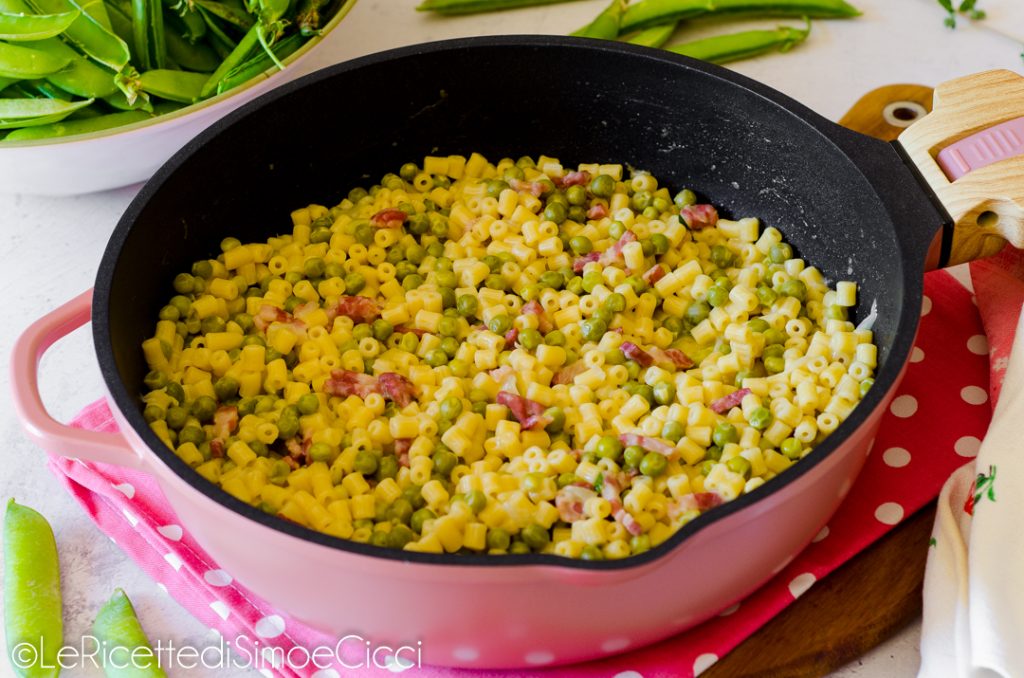
- Difficulty: Very easy
- Cost: Very cheap
- Preparation time: 5 Minutes
- Portions: 4 People
- Cooking methods: Stove
- Cuisine: Regional Italian
- Region: Campania
- Seasonality: Spring, All seasons
Ingredients to prepare Pasta and peas
- 8.8 oz pasta (short like tubetti or mixed pasta)
- 10.6 oz peas
- 3.5 oz smoked pancetta
- 1 onion
- 3 tablespoons extra virgin olive oil
- 3 cups vegetable broth (or hot water)
- pecorino (or Parmigiano Reggiano – optional)
- mint (or marjoram – optional)
- salt
- pepper
Tools to prepare Pasta and peas
- Pot
How to prepare Pasta and peas
In a saucepan, heat the extra virgin olive oil over medium heat and add the finely chopped onion. Let it wilt until it becomes transparent.
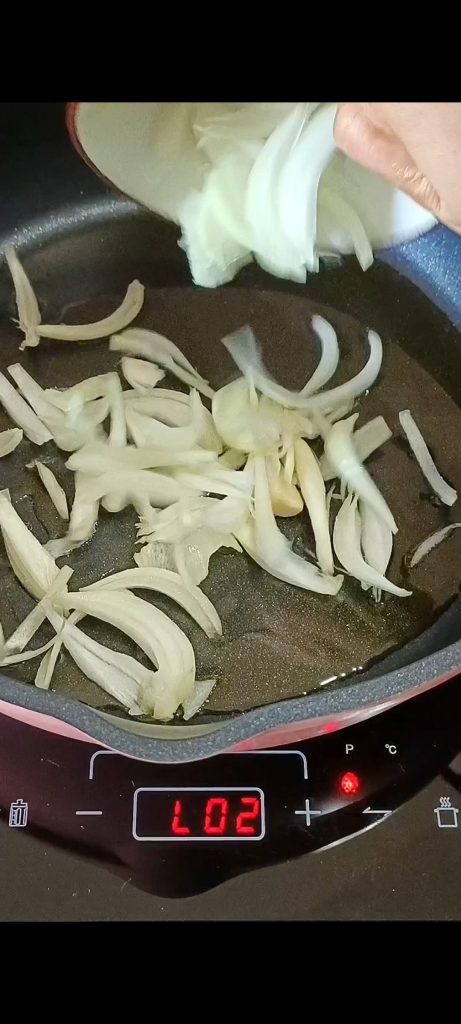
Add the pancetta cubes and sauté them until they become golden and crispy.
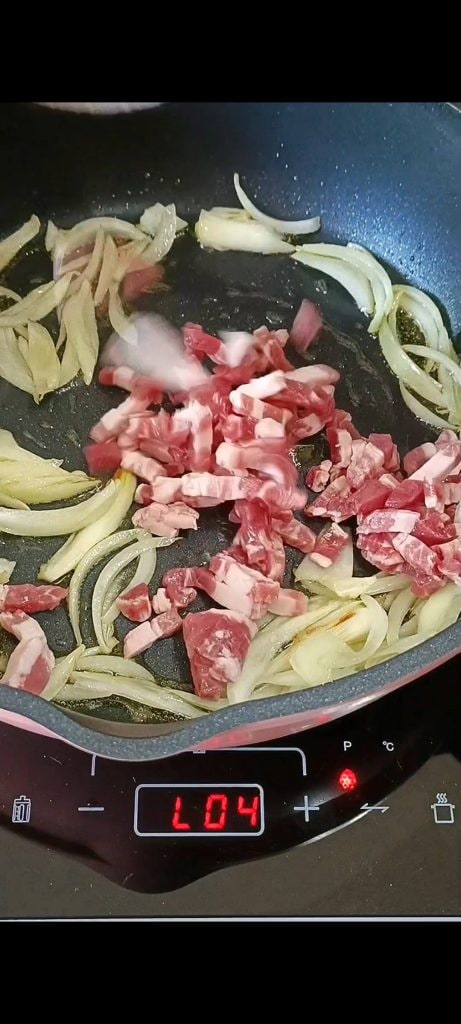
If using fresh peas, shell them. Otherwise, skip this step by draining canned peas or boiling frozen ones according to the package directions.
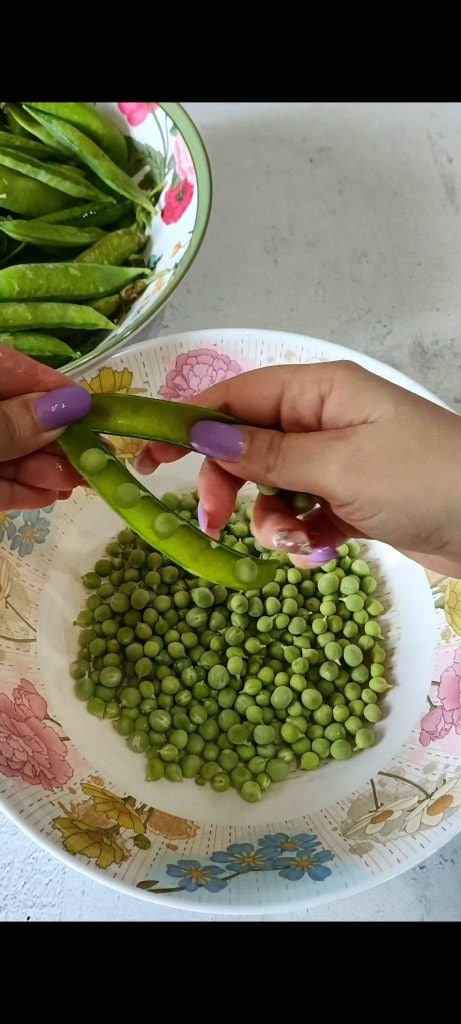
Add the peas to the pot, mix well and let them season for a few minutes.
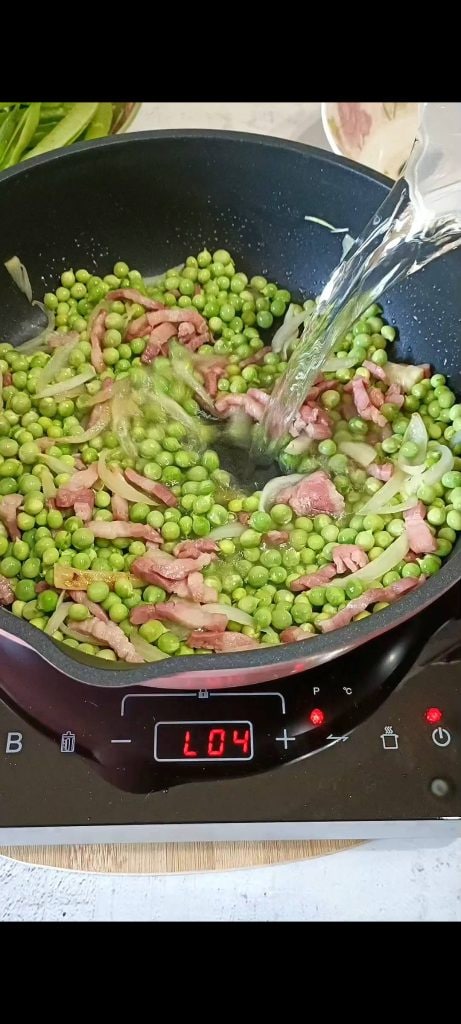
Add part of the broth or hot water, just enough to cover the peas. Add mint (or marjoram) if using. Cook over low heat and covered for about 15-20 minutes or until the peas are tender. If it gets too dry, gradually add more hot water or broth.
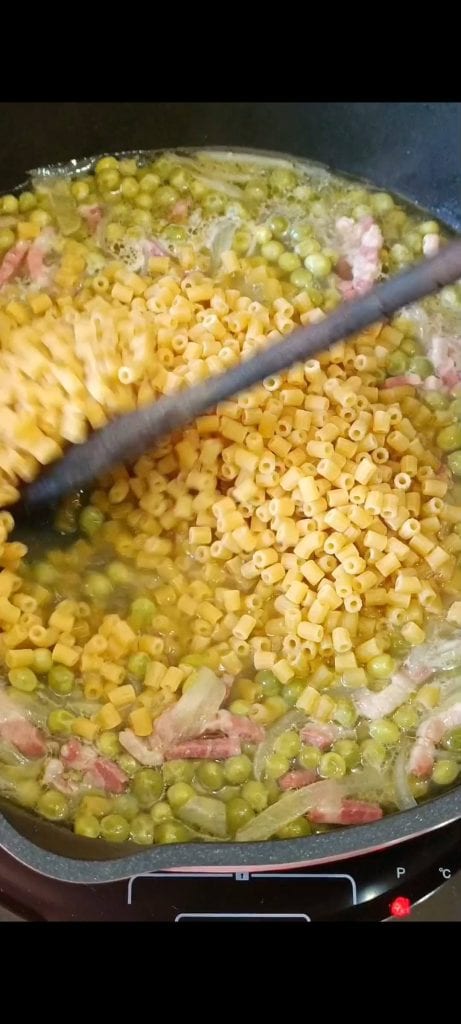
When it boils, add the pasta, stir gently, and continue cooking until the pasta has absorbed most of the liquid. However, if it becomes too dry, add hot water: the final result should not be soupy but creamy and moist.
Off the heat, toss with pecorino or another grated cheese, if desired.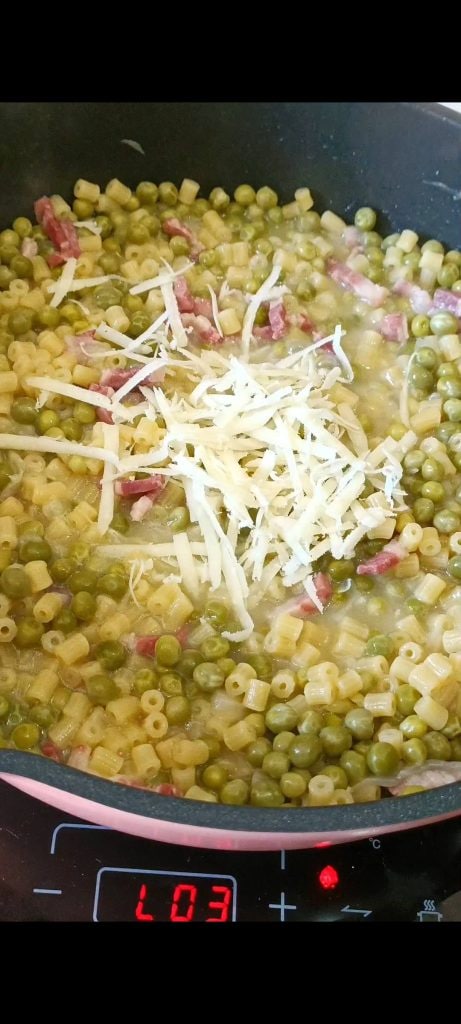
Serve the pasta and peas very hot.
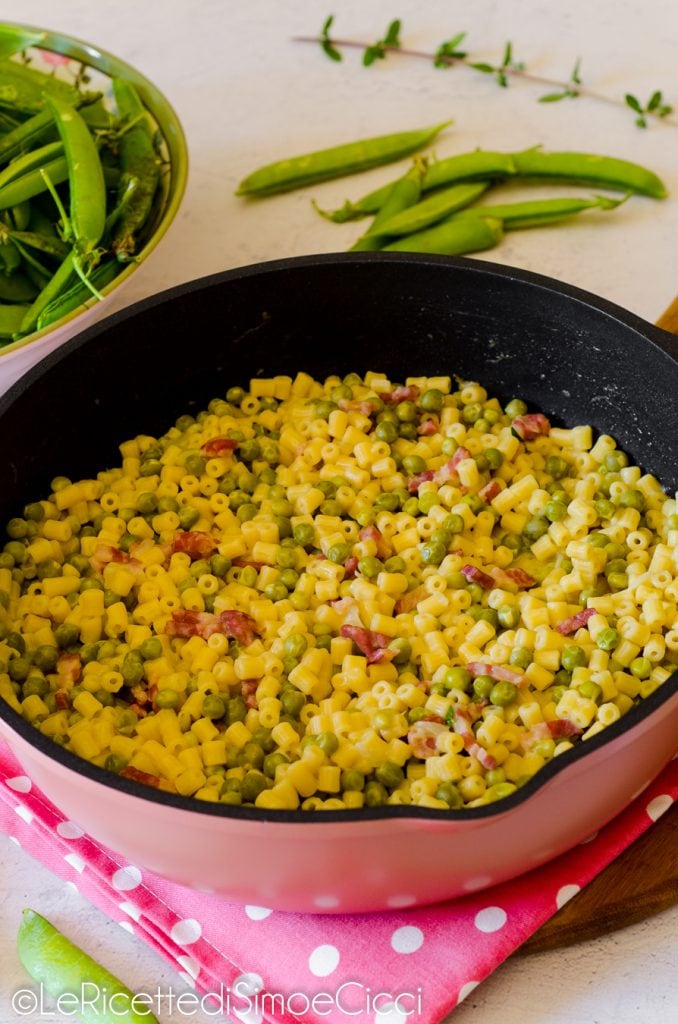
Storage
Pasta and peas is best when freshly made but can be stored in the refrigerator for 1-2 days. Reheat with a little broth or water to restore creaminess.
Tips
Mixed pasta is traditional, but ditalini or tubetti are also perfect.
Stir often during cooking to prevent the pasta from sticking to the bottom.
For an extra touch, you can add a grating of lemon zest when serving.
Variations
With Cooked Ham: Replace pancetta with cooked ham cubes for a milder taste.
Vegetarian: Omit pancetta and add a teaspoon of tomato paste for a more intense flavor.
With Speck or Guanciale: For a stronger flavor, try speck or guanciale instead of pancetta.
With Egg: At the end of cooking, add a beaten egg and stir quickly for a carbonara-like texture.
With Potatoes: Add a diced potato along with the peas to make the dish even more substantial.
“Scarpariello” Style: Add some fresh cherry tomatoes cut in half and plenty of grated cheese for a richer version.
FAQ (Questions and Answers)
Can I use canned peas?
Yes, but add them only towards the end of cooking, as they are already cooked and softer.
Can I cook the pasta separately?
Yes, but you would lose the typical creaminess of the Neapolitan version, where the pasta’s starch mixes directly with the other ingredients.
Can I use long pasta?
Traditionally, short pasta is used, but you can break spaghetti or linguine for a homemade version.
How do I avoid overcooking the pasta by cooking it directly with the peas?
Add the broth little by little and check the cooking often, just like you would with a risotto.
Is the dish suitable for children?
Absolutely yes! It is nutritious, soft, and has a delicate flavor that even the little ones will enjoy.

